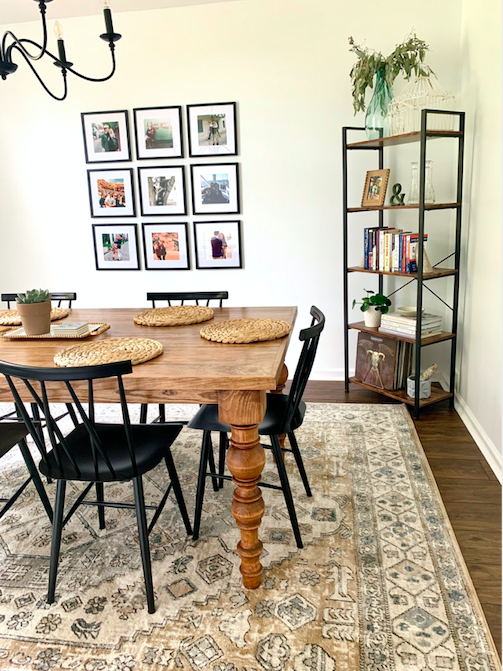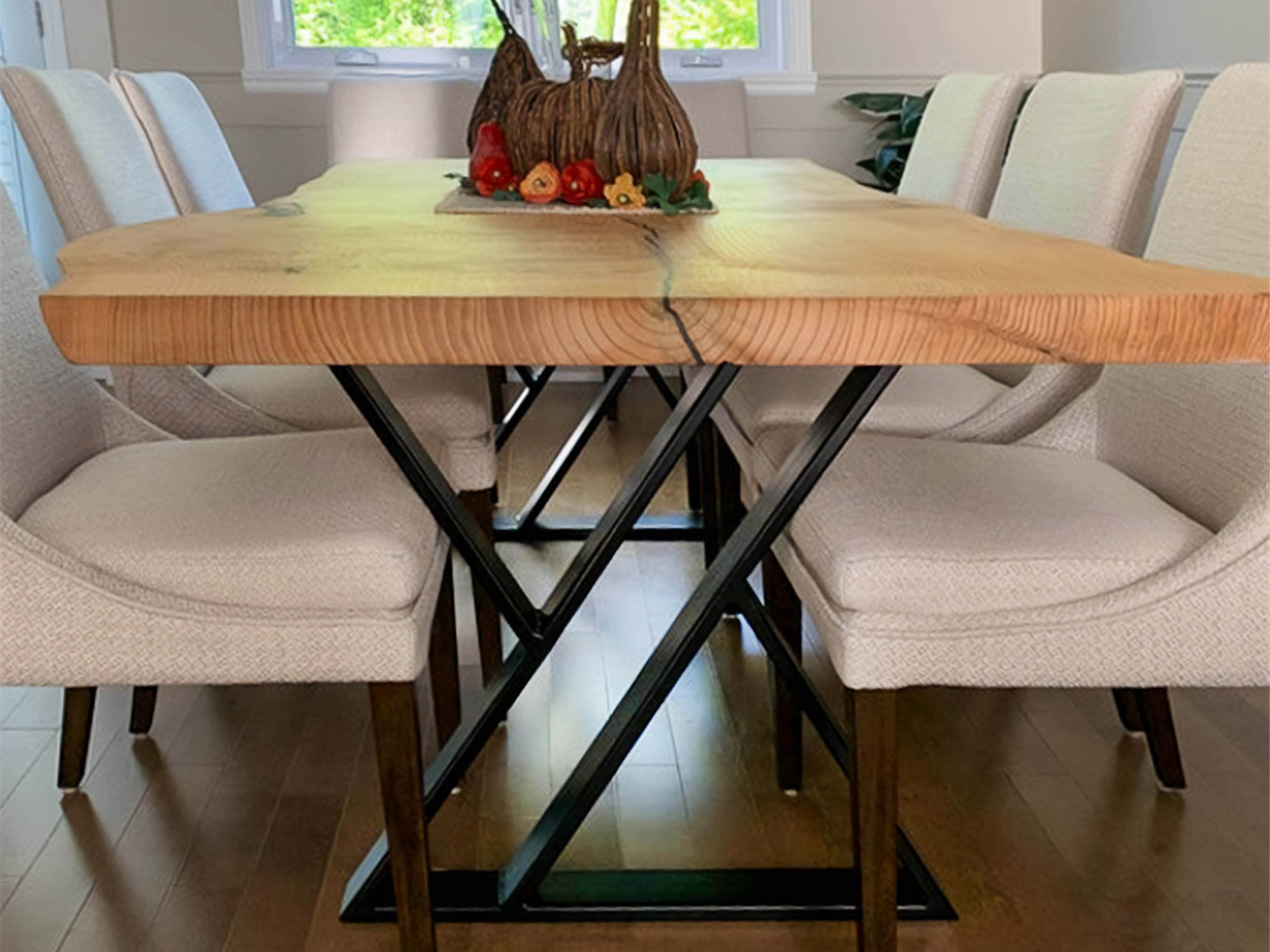Simple Steps to Replacing Old Dining Room Table Legs with New Ones
Simple Steps to Replacing Old Dining Room Table Legs with New Ones
Blog Article
From Traditional to Modern: Discover the Perfect Dining Space Table Legs for Your Style
The option of dining-room table legs plays a pivotal role in specifying the total personality of your space, linking the void between typical craftsmanship and modern aesthetic appeals. While timeless designs such as cabriole and transformed legs stimulate a feeling of timeless elegance, modern styles like hairpin and geometric choices present a chance for striking visual interest. Evaluating the right equilibrium between these styles requires a nuanced understanding of your existing décor and individual preference. As you think about these components, the question remains: exactly how can you perfectly incorporate these varied leg designs to produce an unified eating experience?
Understanding Table Leg Styles
The selection of dining room table leg designs can dramatically affect both the visual appeals and capability of the room. Each leg style contributes distinct practical features and visual components, accommodating varied style preferences and usage demands. Understanding these styles is important for selecting the ideal eating table that aligns with your general interior layout vision.
For example, tapered legs offer a tidy, timeless look that can enhance a space's elegance, while stand bases offer stability and optimize legroom, making them suitable for smaller areas. Hairpin legs, a characteristic of mid-century contemporary design, introduce an industrial panache, permitting a ventilated, open feeling. Trestle legs stimulate rustic charm, supplying robust support and a feeling of eternity.
Furthermore, the choice of products plays a substantial function. Wooden legs can bring warmth and texture, whereas metal options commonly convey a smooth, contemporary vibe. Ultimately, comprehending table leg designs is necessary for creating a cohesive dining location that reflects individual style while ensuring usefulness and convenience. By thoughtfully thinking about these elements, you can improve both the aesthetic and practical appeal of your dining area.
Standard Table Leg Options
When picking dining room table legs, conventional alternatives usually personify classic style and workmanship. These layouts mirror a rich heritage and a commitment to high quality, making them suitable for those who appreciate classic aesthetics.
Among one of the most legendary typical leg styles is the cabriole leg, identified by its stylish rounded shape. This design frequently includes attractive carvings and is most typically located in Queen Anne and Chippendale furnishings. One more preferred choice is the turned leg, which flaunts a collection of smooth, rounded forms that supply a timeless appearance while keeping stability.
Additionally, the straight leg, while easy, offers a unadorned and tough framework that can mix seamlessly with a selection of tabletop styles. For those attracted to ornate detailing, claw-and-ball feet legs evoke a feeling of magnificence and can act as a spectacular prime focus in any eating area.
Lastly, pedestal bases, although not strictly legs, supply an alternative typical choice that allows for adequate legroom and can be beautifully carved. Each of these traditional leg styles adds to the overall setting of a dining space, marrying feature with aesthetic charm.

Modern Table Leg Designs
Modern table leg designs offer a varied series of designs that highlight cutting-edge products and tidy lines. These styles often prioritize capability while working as striking focal factors within a dining room. Minimalist aesthetics prevail, with legs crafted from products such as metal, glass, and crafted timber, which add to a article modern and airy feel.
One preferred design is the hairpin leg, defined by its slender, tapered structure that provides security without overwhelming the table top (dining room table legs). This design is typically found in mid-century contemporary furniture and can easily match various eating table forms. An additional trend is making use of geometric forms, where legs may tackle unbalanced or angular kinds, adding aesthetic passion and a touch of virtuosity

Blending Styles for Special Spaces
Often, home owners seek to develop special eating spaces that mirror their personal style by mixing numerous layout components. This technique permits the incorporation of diverse aesthetic appeals, leading to an unified yet pop over here distinctive atmosphere. Matching a rustic wood table with sleek, contemporary metal legs can develop a distinctive comparison that boosts the area's general charm.
Furthermore, integrating vintage table legs with contemporary tabletops can evoke a feeling of history while preserving a modern-day sensibility. Such combinations not only display specific taste yet additionally urge creativity, allowing home owners to curate an area that really feels both personal and inviting.
Shade plays an essential role in this blending process; choosing table legs that enhance or contrast with the existing color pattern can improve aesthetic interest. Whitewashed legs can soften the daring of a dark table surface, producing a well balanced visual.
Tips for Picking the Right Legs
Picking the right table legs is vital for attaining both capability and aesthetic appeal in your dining area. Begin by thinking about the total design of your room. Standard setups profit from legs that include detailed makings or transformed layouts, while contemporary areas might require smooth, minimalist designs.
Following, examine the elevation and stability of the legs. dining room table legs. Common table vary between 28 to 30 inches in height, so make certain the legs complement this measurement for comfort. Additionally, robust products, such as hardwood or metal, can enhance stability and long life
Evaluate the leg shape also-- choices include right, tapered, or pedestal designs. Straight legs offer a classic appearance, while conical legs can add a touch of elegance. Pedestal bases provide ample legroom and are ideal for smaller areas.
Verdict
In recap, choosing the suitable dining-room table legs calls for cautious factor to consider of both conventional and contemporary styles. Conventional alternatives such as cabriole and turned legs offer classic elegance, while contemporary styles like hairpin and geometric forms give a modern touch. By harmonizing leg style, elevation, and product with the overall decoration, a cohesive and welcoming ambience can be attained. Eventually, the chosen table legs need to show the wanted aesthetic, improving the eating experience within the space.
The variety of eating space table leg styles can substantially influence both the looks and performance of the area. Ultimately, comprehending table leg designs is try this vital for developing a natural dining location that shows individual design while making certain functionality and comfort.One of the most renowned conventional leg designs is the cabriole leg, identified by its graceful rounded form. Straight legs provide a classic look, while tapered legs can add a touch of style.In recap, choosing the suitable dining space table legs requires mindful factor to consider of both modern and standard designs.
Report this page